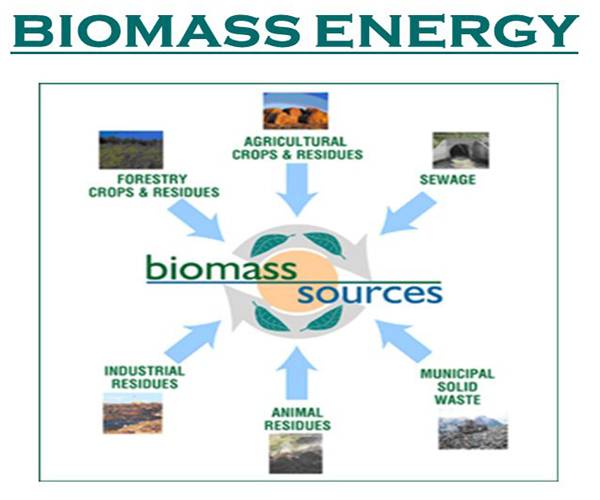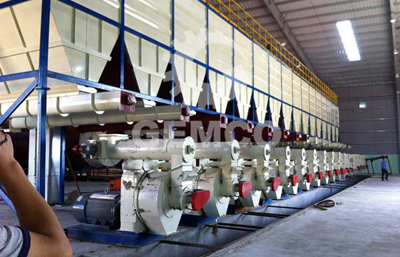Current status and development of biomass energy utilization
Biomass energy utilization
Energy is an essential resource and an important strategic material for the survival of human society and the development of the national economy. As a kind of renewable energy, biomass energy is an important part of new energy development. Biomass energy is the form of energy that solar energy stores in the form of chemical energy in biomass, that is, energy based on biomass. It is directly or indirectly derived from the photosynthesis of green plants and can be converted into conventional solid, liquid and gaseous fuels. It is inexhaustible and inexhaustible. It is a renewable energy source and the only one that can be regenerated.
Carbon source
Due to the advantages of bioenergy, countries around the world have made it an important choice for the development of new energy sources. However, the current direct combustion method is still used to provide living energy for residents in developing countries, with low energy utilization rate and serious waste of resources. Modern biomass energy utilization refers to the use of thermochemical, biochemical and other means to produce high-grade energy such as solid, liquid and gas to replace fossil fuels through a series of advanced conversion technologies, providing electricity and transportation fuel for human production and life. The development of modern biomass energy utilization technologies for terminal energy products such as heat and gas has important practical and long-term significance for replacing or partially replacing fossil energy, protecting the ecological environment and realizing the sustainable development of human society.
At present, China's biomass energy industry has begun to take shape and has accumulated some mature experience, but the maturity of technology in different application fields is not the same. A few biomass energy conversion technologies have initially realized industrial application, such as rural household biogas, farm biogas project and straw power generation technology; biomass power generation, biomass dense molding fuel, biomass liquid fuel, etc. are entering the early stage of commercialization. Stage; there are many emerging biomass technologies that are still in the research stage.

Direct combustion
Biomass burning in the air is one of the oldest and most widely used basic energy conversion methods for human use, including stove combustion and boiler combustion technology. Biomass-fueled boilers are mainly used for large-scale centralized power generation, heating and heating. Biomass direct combustion power generation technology has a high investment, and the efficiency is also high when used on a large scale. However, it is required to concentrate biomass, achieve a certain amount of resource supply, and reduce investment and operating costs is its future development direction. Due to the fluffy structure of the biomass, the bulk density is large and it is not easy to store and transport. The process of extruding the pulverized biomass into a dense strip-shaped or granular shaped fuel by mechanical pressurization is called a dense forming technique. After such curing treatment, the quality of the biomass is increased, the strength is increased, and the storage and transportation are more convenient.
Biomass gasification
Biomass gasification is one of the earliest and more mature technologies for large-scale utilization of biomass. It can not only achieve centralized gas supply and heat supply for residents, but also achieve power generation for internal combustion engines and gas-fired equal equipment. It is highly efficient in conversion. Advanced technology. Generally speaking, the biomass gasification unit developed by developed countries in Europe and America has a large scale, high degree of automation and complicated process; the main reason is power generation and heating, and the cost is high. In order to meet the needs of rural energy use in developing countries, some countries have studied small biomass gasification equipment. In order to solve the different concentrations of pollutants such as tar, particles, alkali metals and nitrogen compounds which are not completely produced by gasification during biomass gasification, catalysts are being studied to increase the gasification rate and eliminate the tar in gasification.
Biomass liquid fuel technology
Biomass liquid fuels mainly include fuel ethanol, biodiesel biomass cracking oil and biomass synthetic fuel. In the past 20 years, the use of sugar cane, corn and other sugar and starch raw materials to produce fuel ethanol, the use of animal and vegetable oils to produce biodiesel technology has gradually commercialized. At present, the first generation of liquid biofuels such as corn ethanol and biodiesel have been gradually applied to industrial and agricultural production at home and abroad, and have become a powerful supplement to petroleum fuel.
We receive enquiries in English, Español (Spanish), Русский язык (Russian), Français (French) and العربية (Arabic). Our professional team will reply to you within one business day. Please feel free to contact us!




